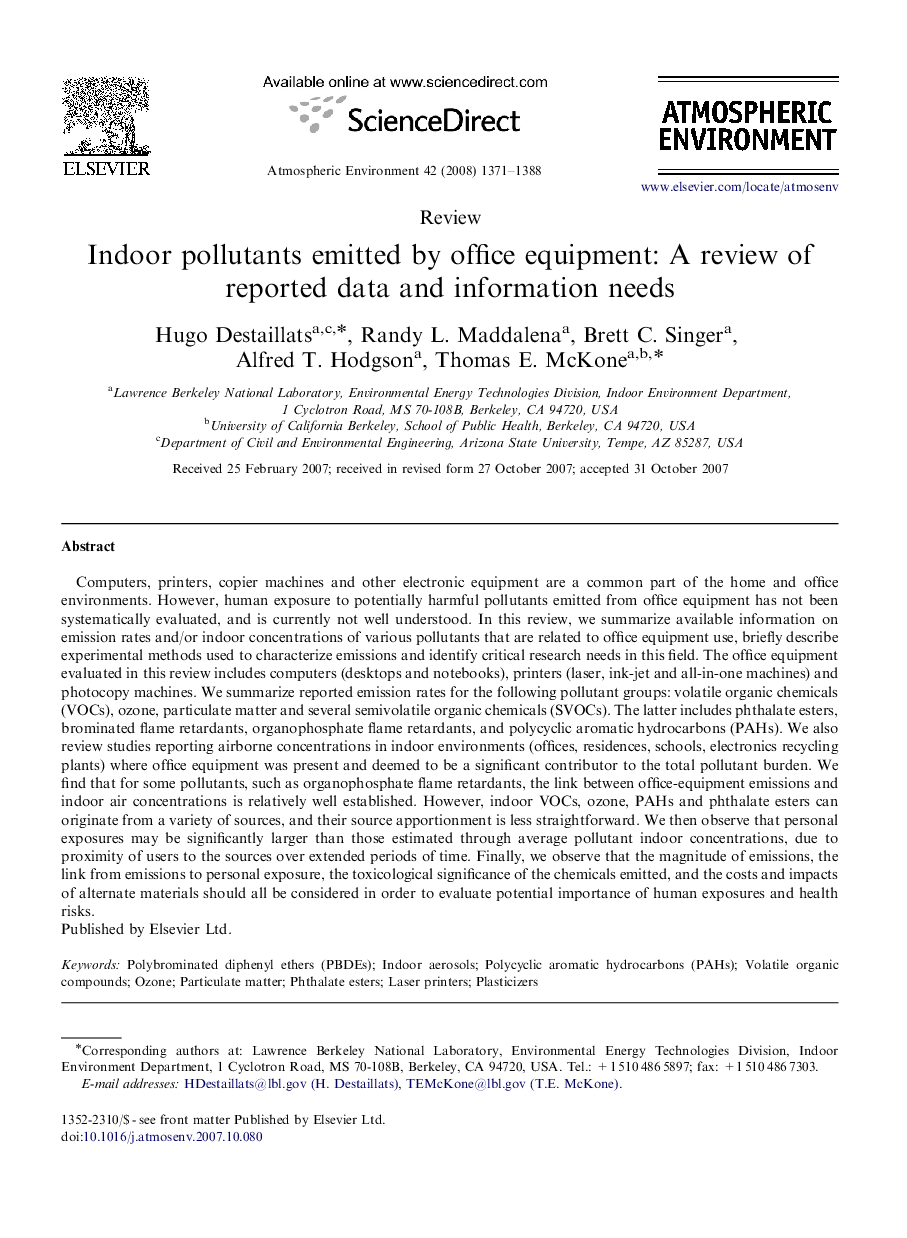| Article ID | Journal | Published Year | Pages | File Type |
|---|---|---|---|---|
| 4442205 | Atmospheric Environment | 2008 | 18 Pages |
Computers, printers, copier machines and other electronic equipment are a common part of the home and office environments. However, human exposure to potentially harmful pollutants emitted from office equipment has not been systematically evaluated, and is currently not well understood. In this review, we summarize available information on emission rates and/or indoor concentrations of various pollutants that are related to office equipment use, briefly describe experimental methods used to characterize emissions and identify critical research needs in this field. The office equipment evaluated in this review includes computers (desktops and notebooks), printers (laser, ink-jet and all-in-one machines) and photocopy machines. We summarize reported emission rates for the following pollutant groups: volatile organic chemicals (VOCs), ozone, particulate matter and several semivolatile organic chemicals (SVOCs). The latter includes phthalate esters, brominated flame retardants, organophosphate flame retardants, and polycyclic aromatic hydrocarbons (PAHs). We also review studies reporting airborne concentrations in indoor environments (offices, residences, schools, electronics recycling plants) where office equipment was present and deemed to be a significant contributor to the total pollutant burden. We find that for some pollutants, such as organophosphate flame retardants, the link between office-equipment emissions and indoor air concentrations is relatively well established. However, indoor VOCs, ozone, PAHs and phthalate esters can originate from a variety of sources, and their source apportionment is less straightforward. We then observe that personal exposures may be significantly larger than those estimated through average pollutant indoor concentrations, due to proximity of users to the sources over extended periods of time. Finally, we observe that the magnitude of emissions, the link from emissions to personal exposure, the toxicological significance of the chemicals emitted, and the costs and impacts of alternate materials should all be considered in order to evaluate potential importance of human exposures and health risks.
